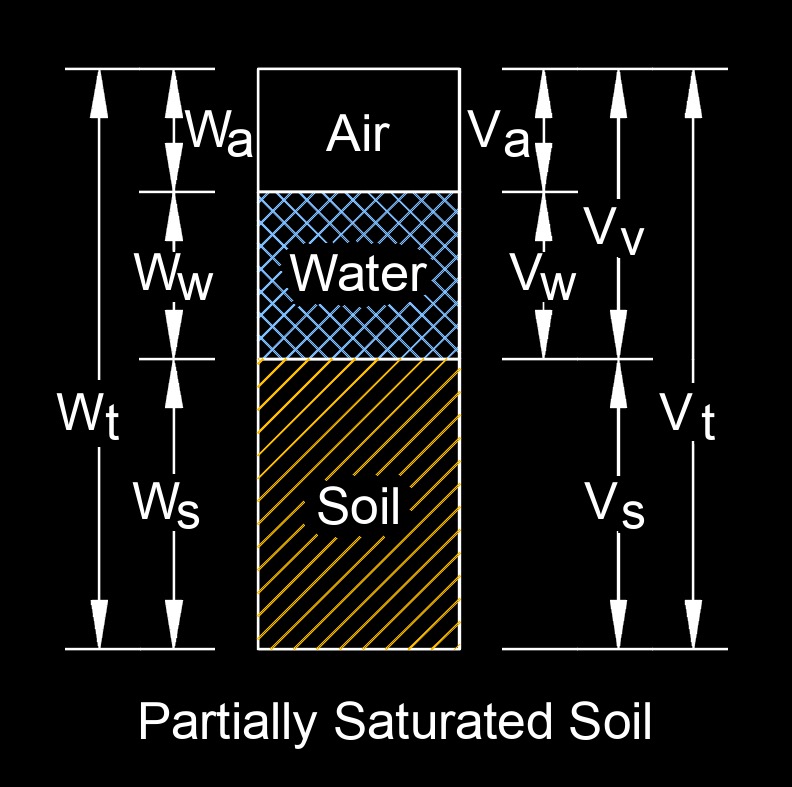Bulk Density
Bulk Density Formula |
||
|
\( Y \;=\; \dfrac{ W_t }{ V_t } \) (Bulk Density) \( W_t \;=\; Y \cdot V_t \) \( V_t \;=\; \dfrac{ W_t }{ Y }\) |
||
| Symbol | English | Metric |
| \( Y \) = Bulk Density | \(lbm \;/\; ft^3 \) | \(kg \;/\; m^3 \) |
| \( W_t \) = Total Weight of Soil | \(lbf\) | \(N\) |
| \( V_t \) = Total Volume of Soil | \(ft^3\) | \(m^3\) |
 Bulk density, abbreviated as Y, also called apparent density, is the mass or weight of a material divided by its volume. It is a measure of how densely packed or compacted a substance is.
Bulk density, abbreviated as Y, also called apparent density, is the mass or weight of a material divided by its volume. It is a measure of how densely packed or compacted a substance is.
The bulk density of a material provides information about its physical properties and can be useful in various fields such as construction, agriculture, mining, and materials science. It is commonly used to determine the quantity of a material in a given volume or to estimate the storage or transportation capacity of containers or structures.
Bulk density of a substance is influenced by factors such as the particle size and shape, porosity, moisture content, and compaction. Different materials can have significantly different bulk densities. For example, metals generally have high bulk densities due to their dense atomic structure, while gases have very low bulk densities because their molecules are widely spaced.
To measure the bulk density of a material, a known quantity of the substance is typically placed in a container of known volume. The mass of the material is then measured, and the bulk density is calculated by dividing the mass by the volume. It's important to note that bulk density is distinct from true density, which represents the density of the individual particles or molecules of a substance without considering the voids or pores between them. Bulk density takes into account the overall volume, including the void spaces between particles or aggregates.

